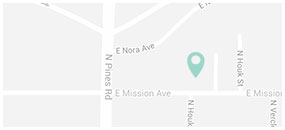Un-erupted or Impacted Teeth
What is an impacted or un-erupted tooth?
An impacted tooth occurs when the proper eruption is impeded either by insufficient space or a physical obstruction. The canine, sometimes referred to an eyetooth, is one of the most commonly impacted teeth second only to wisdom teeth. The roots of the canine are some of the longest and strongest in your mouth making these teeth important for your bite and chewing ability. When a canine is impacted, every effort should be made in attempt to bring it into the mouth.
When do you place a bracket and chain?
Many times this effort requires treatment not only from an oral surgeon but also from an orthodontist. It is possible for the tooth will erupt if proper space is created, however, in some cases it is necessary for a surgical procedure to uncover the tooth and place a bracket with chain that will later be used by the orthodontist to facilitate eruption into the mouth. The best time to seek treatment is before the root is fully developed (age 13-15). After the root is fully formed the chance for successful treatment is reduced and in some situations the tooth will require removal. The procedure to expose and place a bracket and chain to an impacted tooth is relatively straightforward.
Many times the procedure will be performed with sedation but can at times be completed only with local anesthesia. Depending on the degree of difficulty, the procedure may require 45 minutes to 1 hour. You can expect a limited amount of swelling and discomfort following the procedure and although pain medications may be prescribed many times over the counter acetaminophen or ibuprofen is adequate.
We ask that you review our preoperative surgical instructions in order to provide you with the most comfortable and safe anesthesia possible.

